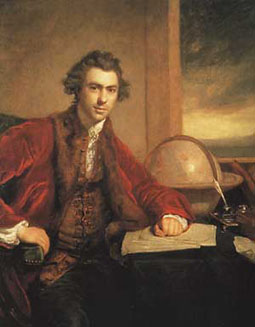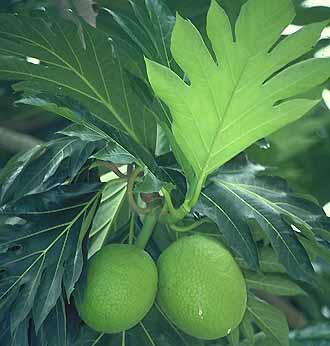The Plant Collector
 |
| Sir Joseph Banks (1743-1820) |
'Joseph Banks Esq. Fellow of this Society, a gentleman of large fortune, who is well versed in Natural History being desirous of undertaking the same voyage, the Council very earnestly requests their Lordships (of the Admiralty) that in regard to Mr. Banks' great personal merit, and for the advancement of useful knowledge, he also together with his suite be received on board of the ship under the command of Captain Cook.'Banks' party included Dr. Solander, a Swedish Botanist who he had become friends with in London, Sporing, a naturalist, as well as three artists and four servants. He had been passionate about botany since childhood, when at the age of fourteen he had reportedly decided: "I will make myself acquainted with all these different plants for my own pleasure and gratification."
The voyage lasted three years and Banks collected many plants along the way. The journey was not without its dangers though: the ship and crew faced shipwrecks, disease and attacks by natives. As Banks himself put it: "The almost certainty of being eat as soon as you come ashore adds not a little to the terrors of shipwreck."
 |
| James Cook, captain of HMS Endeavour |
The trip was not without it's rewards though, as Banks records:
'The number of natural productions discovered in this voyage is incredible; about one thousand species of plants that have not been at all described by any botanical author; five hundred of fishes; as many of birds; with insects, sea and land, innumerable.'When he returned to England in July 1771, he immediately became famous and this led King George III to choose him to direct the future of Kew Gardens. Having seen the benefit of scientific voyages, Banks dispatched a number of naturalists to far-flung places to bring back plants for Kew.
He sent George Vancouver to the Pacific Northwest (the city of Vancouver still bears his name) and William Bligh to the South Pacific (which led to the Mutiny on the Bounty). When David Nelson, Banks' plant collector on the later voyage, was abandoned along with Bligh by the mutineers, he had to watch as they threw a thousand of his plants over the side. The mutineers had apparently resented the fresh water rations being used to keep the plants alive.
 |
| Breadfruit (Artocarpus altilis) |
Nelson died after forty-seven days voyaging (and 4,500 miles) with Bligh in a small open boat and Bligh noted in his log:
'The loss of this honest man I much lamented; he had with great care and diligence attended to the object for which he was sent. I was sorry I could get no tombstone to place over his remains.'Despite the obvious dangers, the plant collection trips continued under Banks' guidance and they added greatly to the gardens at Kew and to the library and Herbarium which were finally built after Sir Joseph Banks' death in 1820.
See our Science Gallery: a series of photos from a recent visit to Kew.
Further Reading:
The Making of Kew by Madeleine Bingham (1975).
























0 comments:
Post a Comment